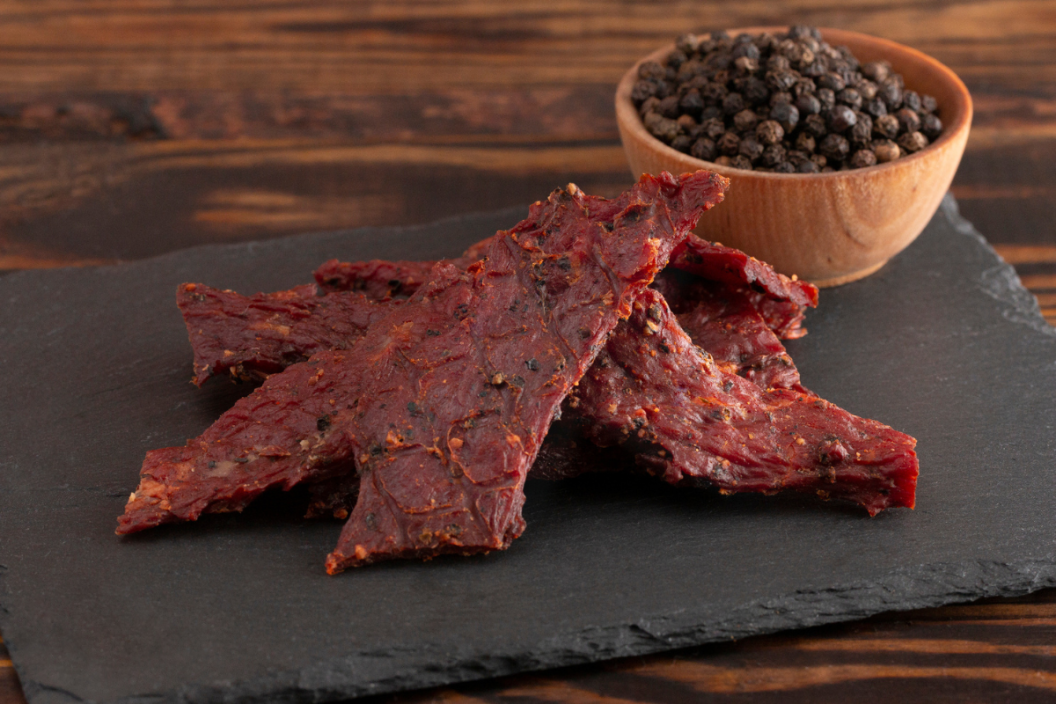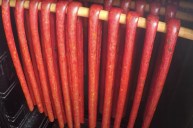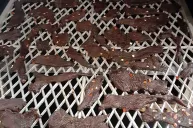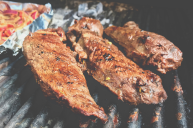One of the most sought-after spoils of a deer hunt—and the one I'm most hesitant to share—is venison jerky. It's the perfect protein source on the go, whether you're hiking, hunting, or traveling. While you could take your deer to a processor and pay to have jerky made, it can be much more affordable and fun to make your own. From flavors to methods to cuts of meat, here's how to make the best venison jerky.
Venison Cuts
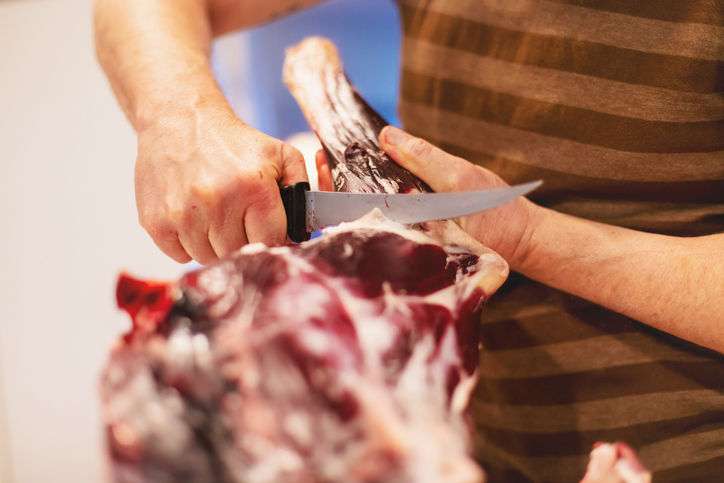
Starting with the right cuts of venison is critical to that perfectly chewy consistency, and lean meat makes the best jerky. Larger hind leg roasts allow for sizable slices, and most of their muscle fibers are running in the same direction. Top eye and rump roasts are my top picks. You can choose other cuts such as backstraps for jerky, but most hunters save these for grilling.
Remove all fat and silver skin to start. For chewy yet tender jerky you won't have to chomp on till your jaw hurts, uniformly cut the meat against the grain between an eighth-inch and half-inch thick—about a quarter-inch is usually the sweet spot.
If you prefer more tender, easy-to-eat ground venison jerky, you can use a prime cut or the "leftovers" and add some pork fat before piping it through a jerky gun.
Marinade and Seasoning
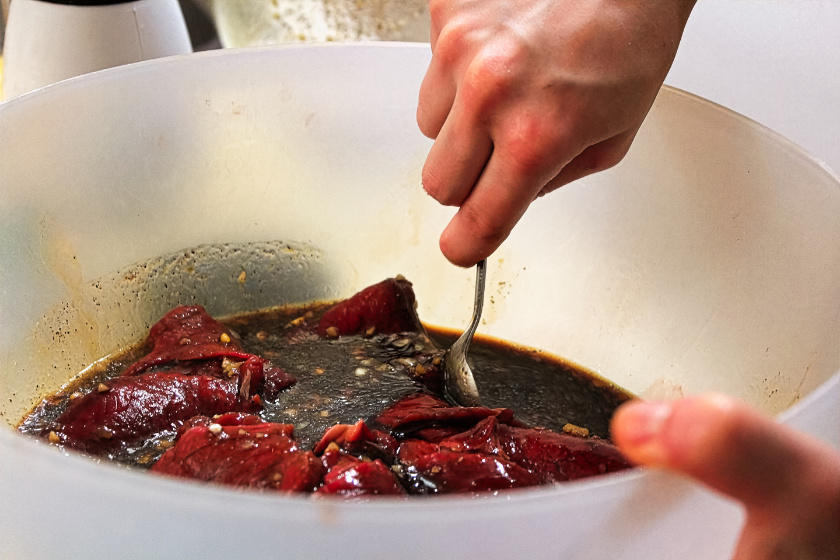
Choosing the right complementary flavors in the form of dry seasonings or marinades will take your venison jerky to the next level. Usually a blend of sweet, salty, and sometimes spicy makes for the best combination—this often starts with brown sugar or maple syrup, soy sauce and/or Worcestershire sauce, and hot sauce or cayenne.
You can purchase pre-made seasoning mixes and marinades or create your own. If you want to make your venison jerky from scratch, try one of these recipes:
If you're crunched for time, you can marinate for as little as four hours, but overnight and up to 24 hours will result in much more flavorful deer jerky. Once marinated, pat off excess marinade with paper towels to help speed up drying time and prevent a dripping mess.
Drying Method
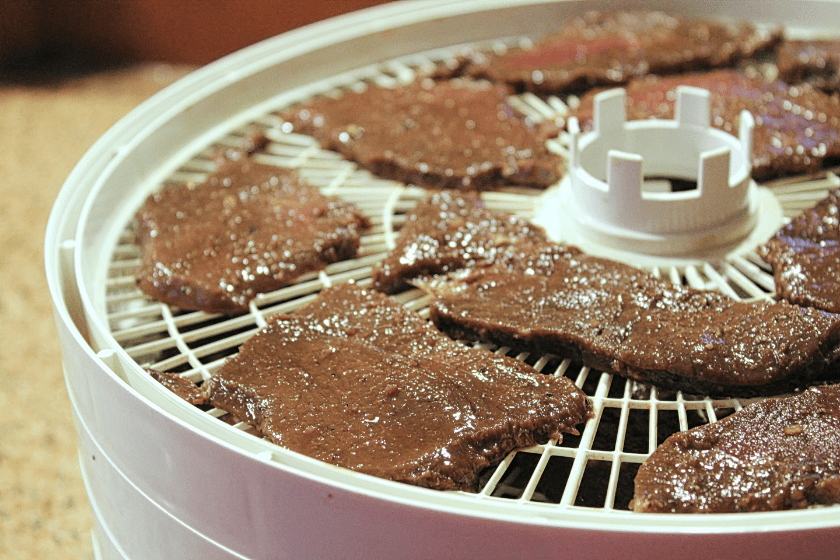
The drying method you opt for can help determine the flavor and texture of your venison jerky. Generally, you'll choose between using a dehydrator, a smoker, or your kitchen oven.
My favorite way to make venison jerky is in a dehydrator. Dehydrators make the process pretty simple and low-maintenance, and you can find high-quality options that won't break the bank. Depending on the thickness of your meat and temperature, drying time usually falls between four and eight hours with a dehydrator. You can also use your dehydrator to dry fruits, herbs, and veggies to get even more use out of your investment. Look for a dehydrator that allows you to make precise temperature adjustments and keeps a consistent temperature throughout with a fan.
I've been using the CHARD 8 Tray Stainless Steel Digital Dehydrator, and it's a fantastic option at just $269.99. With eight trays, it offers plenty of room for a big batch of jerky (over 1,300 square inches), and you don't need to rotate them for even drying. Just set the temperature and timer using the LED display and wait. It operates quietly, and the clear tempered glass door allows you to keep an eye on your jerky's progress without disrupting the process.
While dehydrators can create the perfect venison jerky with minimal fuss, some meat eaters prefer the genuine wood-smoked flavor you can only achieve with a smoker. Liquid smoke just isn't the same! Going this route will require a little extra work, as you'll need to load up on wood pellets or chips. The smoking process could also add some potentially harmful carcinogens to your jerky. But you're probably making venison jerky because it's delicious, not because it's a health food. Follow the guidelines shared by your smoker manufacturer, and aim for an internal temperature of 165 degrees F to be safe.
Depending on the type of smoker, temperature, and meat, your jerky will probably be ready to munch in three to six hours. If you opt for a pellet smoker and have the budget for it, check out the Traeger Ironwood Series. Ranging from $1,399.99 to $1,599.99, these pellet grills/smokers allow you to customize the level of smoke flavor and control settings via a mobile app.
While making venison jerky in your oven won't require purchasing any additional equipment, it can be a bit inconvenient and challenging to achieve similar results to a dehydrator or smoker. Standard kitchen ovens don't always reach the low temperatures required for the best venison jerky, so you might have to leave the oven door cracked to prevent the meat from drying out too quickly and becoming hard. Convection ovens work best to keep the air circulating for an even temperature throughout.
Venison jerky is typically done within three to six hours in the oven, and you'll be without this appliance while your snack dries. But if you rarely make your own jerky and don't want to drop money on a dehydrator or smoker, this could be a solid option for you.
